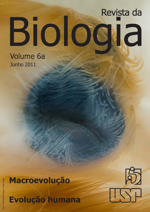Interbreeding of modern humans with neanderthals: new perspectives in the light of genetics
DOI:
https://doi.org/10.7594/revbio.06a.02Keywords:
Ancient DNA, sequencing.Abstract
Some fossil analyses have found osteological similarities between modern humans and Neanderthals that suggest that there was interbreeding between the two species. If, however, we accept the recent African replacement hypothesis, under which modern humans replaced Neanderthals in Europe without interbreeding of the two groups, then these traits could belong to a common ancestor of the two species or maybe could represent an example of convergent evolution. Over a decade of mitochondrial DNA studies, it has been established that, for this molecule, modern humans and Neanderthals are clearly separate genetic lineages, without signs of interbreeding. The recent finding that modern humans and Neanderthals share significant portions of their nuclear DNA, however, raises new questions about the Out-of-Africa hypothesis and about what makes us modern humans.Downloads
Download data is not yet available.
Downloads
Published
2018-04-23
Issue
Section
Ensaio
License
We ensure that our journal does not retain any copyright and that these are exclusive of the author(s) of the text. In that sense, we intend to break any restrictions to the published material and to achieve more intensely our goal of communicating science.
How to Cite
Bitarello, B. D., & Meyer, D. (2018). Interbreeding of modern humans with neanderthals: new perspectives in the light of genetics. Revista Da Biologia, 6(1), 6-9. https://doi.org/10.7594/revbio.06a.02






